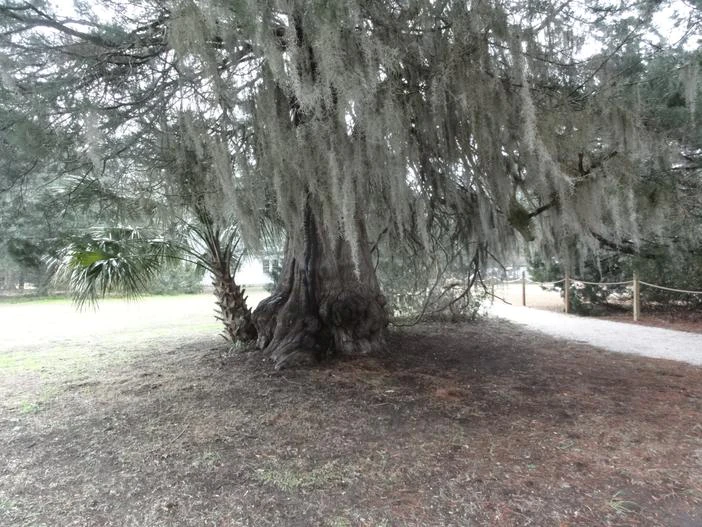Coastal Redcedar
(Juniperus virginiana var. silicicola)
Coastal Redcedar (Juniperus virginiana var. silicicola)
/
/

R. A. Nonenmacher
CC BY-SA 3.0
Image By:
R. A. Nonenmacher
Recorded By:
Copyright:
CC BY-SA 3.0
Copyright Notice:
Photo by: R. A. Nonenmacher | License Type: CC BY-SA 3.0 | License URL: https://creativecommons.org/licenses/by-sa/3.0 | Uploader: Nonenmac | Publisher: Wikipedia Commons






























Estimated Native Range
Climate Requirements for Middletown, New York
| This Plant | Your Site | Plant Suitability for Your Location | ||
|---|---|---|---|---|
| • Precipitation | 41" - 66" | 47" | Aquatic | Aquatic |
| • High Temp. | 85°F - 93°F | 84°F | OK, but your summers are milder than normal for this plant | OK |
| • Low Temp. | 26°F - 59°F | 16°F | Your winter temperatures may be too cold for this plant | Too cold |
This plant should grow well at your location with about N inches per year (Y minutes per month) of irrigation.
Summary
Juniperus virginiana var. silicicola, commonly known as Coastal Redcedar, is an evergreen tree native to the sandy soils of the coastal plains and barrier islands of the southeastern United States. It typically grows to a height of up to 40 feet with a dense, conical to columnar form, making it a distinctive presence in its native habitat. Coastal Redcedar is well-adapted to dry, acidic soils and is often found in pine flatwoods, coastal scrublands, and dunes where it plays a role in stabilizing the soil and providing habitat for wildlife.
The Coastal Redcedar is valued for its aromatic wood, which is resistant to decay and insects, making it a popular choice for closet linings, chests, and fence posts. Its dense foliage provides excellent privacy and wind protection, making it suitable for use as a windbreak or screen in landscape plantings. In cultivation, it requires full sun and well-drained soils, but it is tolerant of drought, heat, and salt spray, which makes it ideal for coastal gardens. While generally low-maintenance, it can be susceptible to cedar-apple rust, a fungal disease that requires the presence of both junipers and apple-family plants to complete its life cycle. Gardeners should be aware of this potential issue, especially in areas where both types of plants are common.CC BY-SA 4.0
The Coastal Redcedar is valued for its aromatic wood, which is resistant to decay and insects, making it a popular choice for closet linings, chests, and fence posts. Its dense foliage provides excellent privacy and wind protection, making it suitable for use as a windbreak or screen in landscape plantings. In cultivation, it requires full sun and well-drained soils, but it is tolerant of drought, heat, and salt spray, which makes it ideal for coastal gardens. While generally low-maintenance, it can be susceptible to cedar-apple rust, a fungal disease that requires the presence of both junipers and apple-family plants to complete its life cycle. Gardeners should be aware of this potential issue, especially in areas where both types of plants are common.CC BY-SA 4.0
Plant Description
- Plant Type: Tree
- Height: 30-65 feet
- Width: 20-30 feet
- Growth Rate: Moderate, Slow
- Flower Color: N/A
- Flowering Season: Non-Flowering
- Leaf Retention: Evergreen
Growth Requirements
- Sun: Full Sun, Part Shade
- Water: Low
- Drainage: Fast, Medium, Slow
Common Uses
Bank Stabilization, Deer Resistant, Drought Tolerant, Erosion Control, Low Maintenance, Salt Tolerant, Street Planting
Natural Habitat
Pine flatwoods, coastal scrublands, and dunes
Other Names
Common Names: Southern Red Cedar , Scrub Cedar , Coastal Red-Cedar , Red-Cedar , Sand-Cedar , Darrell’s Cedar , Sandhill Red Cedar
Scientific Names: Juniperus virginiana var. silicicola , Juniperus silicicola , Juniperus virginiana subsp. silicicola , Juniperus virginiana var. silicicola , Sabina silicicola
GBIF Accepted Name: Juniperus virginiana var. silicicola